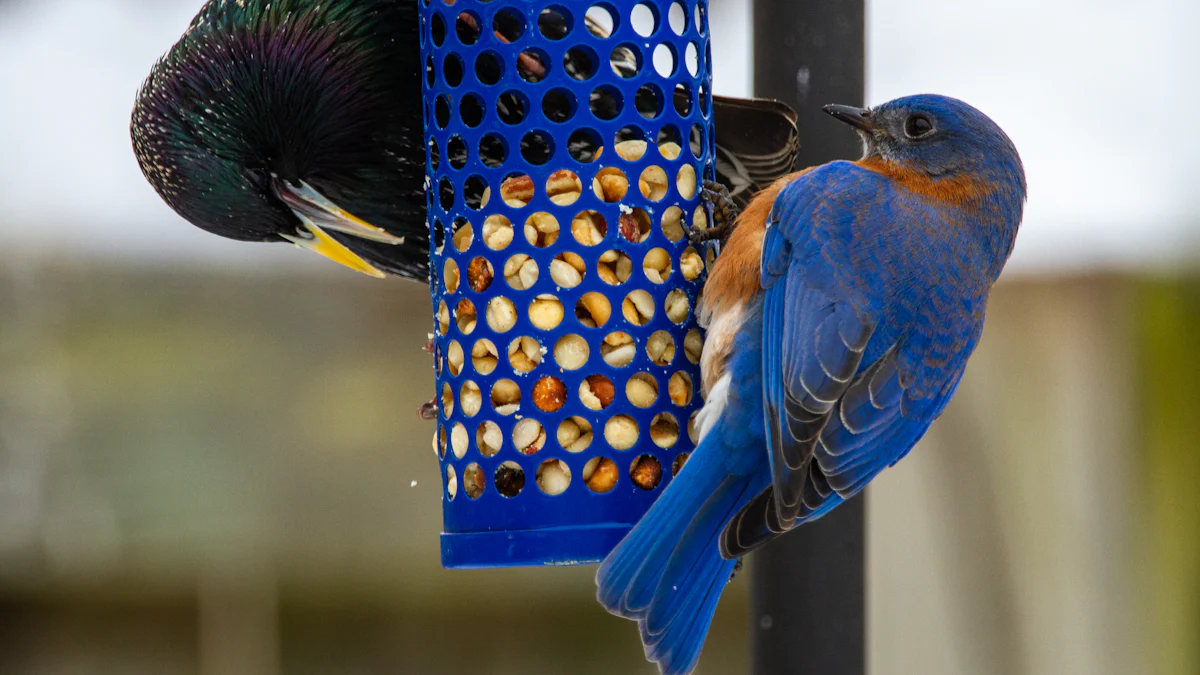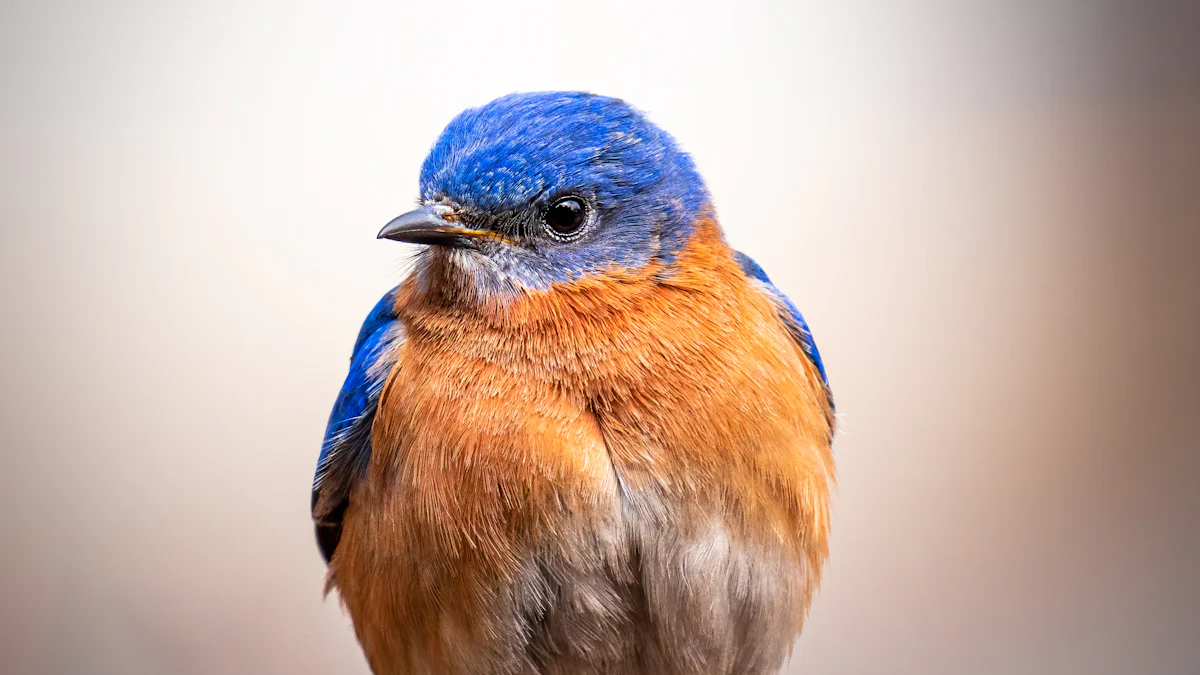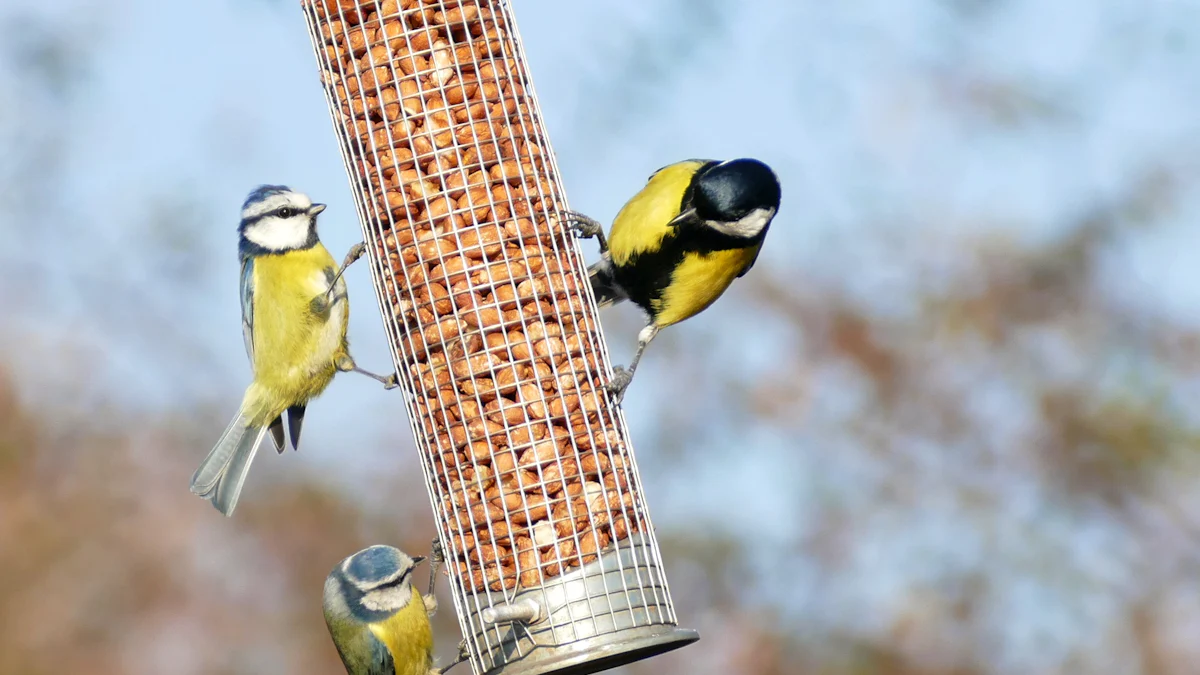
Have you ever wondered why birds flock to mealworms? These tiny treats pack a punch of nutrition. They’re rich in protein, essential linoleic acids, and minerals like zinc and iron. Birds like bluebirds, robins, and chickadees can’t resist them. Offering mealworms for birds is a surefire way to attract feathered friends to your yard.
Key Takeaways
- Mealworms are healthy for birds. They give protein and minerals.
- Feeding mealworms can bring many bird types to your yard. This makes birdwatching fun and helps local wildlife.
- Store mealworms properly to keep them fresh. Mix them with other foods for a balanced bird diet.
Why Birds Love Mealworms for Birds
Nutritional Benefits of Mealworms
Mealworms are like a superfood for birds. They’re packed with nutrients that help birds stay healthy and strong. For every 100 grams, mealworms provide 206 calories and up to 25 grams of protein. That’s a lot of energy for your feathered friends! Protein is especially important because it helps birds build muscles, grow strong feathers, and stay active. During the breeding season, mealworms become even more valuable. They give parent birds the energy to care for their young and help baby birds grow quickly.
Mealworms also contain essential minerals like potassium, zinc, and iron. These nutrients keep birds’ bones strong and their immune systems working well. Plus, mealworms are rich in linoleic acids, which are great for feather health. Did you know dried mealworms have more protein and fat than live ones? Dried mealworms contain 53% protein and 28% fat, while live ones have 20% protein and 13% fat. This makes dried mealworms a concentrated source of nutrition, perfect for birds that need an extra boost.
| Nutrient | Live Mealworm | Dried Mealworm |
|---|---|---|
| Protein | 20% | 53% |
| Fat | 13% | 28% |
| Fiber | 2% | 6% |
| Moisture | 62% | 5% |
Why Mealworms Are Irresistible to Birds
So, why do birds go crazy for mealworms? It’s simple—they’re delicious and easy to eat. Birds like chickadees and nuthatches love the taste of fresh mealworms, whether they’re wiggling or frozen. Mealworms are soft and easy to digest, making them a favorite snack for many species. Even shy birds can’t resist them. If you hold out a handful of mealworms, you might even get a bird to eat right from your hand!
Mealworms for birds are also a great way to attract a variety of species to your yard. Bluebirds, robins, and wrens are just a few of the birds that will show up when you offer these tasty treats. Their high protein and fat content make them a perfect energy source, especially during colder months or migration periods. Once birds discover your mealworm feeder, they’ll keep coming back for more.
Bird Species That Eat Mealworms for Birds

Common Backyard Birds
You might be surprised by how many backyard birds love mealworms. These protein-packed snacks are a favorite for species like black-capped chickadees, nuthatches, and bluebirds. Bluebirds, in particular, seem to have a special fondness for them. You’ll also notice robins swooping in to grab mealworms, especially during nesting season. They often carry several at once to feed their hungry chicks. Cardinals, wrens, and even woodpeckers can’t resist this tasty treat either.
If you’re just starting out, try offering about 100 mealworms in your feeder. Birds like chickadees and jays quickly learn where to find them. Once they do, they’ll keep coming back for more. Fresh mealworms tend to attract more attention initially, but dried mealworms are just as nutritious and easier to store. By offering mealworms, you’ll create a lively and diverse birdwatching experience right in your yard.
Wild Birds That Enjoy Mealworms
Mealworms aren’t just for backyard birds. Many wild birds enjoy them too. Thrushes, titmice, and kinglets are known to snack on mealworms in their natural habitats. Wrens and nuthatches also find them irresistible. These birds rely on insects as a major part of their diet, so mealworms are a perfect match.
However, wild birds often prefer a varied diet. For example, chickadees in the wild might choose caterpillars over mealworms when feeding their chicks. This shows how important it is to offer mealworms as a supplement rather than the sole food source. If you want to attract wild birds, start with live mealworms. They mimic the natural movement of insects, making them more appealing. Once the birds get used to your feeder, you can switch to dried mealworms for convenience.
How to Offer Mealworms for Birds

Using Feeders for Mealworms
Using feeders is one of the easiest ways to offer mealworms to birds. Different feeder styles work well for different bird species. Tray feeders are a great option because they’re open, making mealworms easy to access. They’re also simple to clean, which helps keep the feeding area hygienic. Dish feeders are another excellent choice. Their compact design makes them perfect for close-up birdwatching. If you want to keep mealworms off the ground, hanging feeders are a versatile solution. They also help deter unwanted visitors like squirrels or larger birds.
Some feeders are specially designed to prevent mealworms from being wasted or spoiled. For example, peanut-style feeders can be adapted for mealworms, keeping them secure while still accessible to birds. Choosing the right feeder ensures your feathered friends get the most out of their mealworms.
Ground Feeding Techniques
If you prefer ground feeding, there are a few tricks to make it effective. Place mealworms on a plastic lid or piece of cardboard. This keeps them off the soil and makes cleanup easier. To avoid attracting pests, add vegetables like cabbage or potato slices alongside the mealworms. These are less likely to mold and can help keep the feeding area fresh. Always replace any food immediately if you notice mold. This keeps the birds safe and prevents pests from taking over your yard.
Ground feeding can attract shy birds that might not visit feeders. Wrens and thrushes, for example, often prefer foraging on the ground. By offering mealworms this way, you’ll create a welcoming space for a variety of species.
Mixing Mealworms with Other Bird Food
Mixing mealworms with other bird food is a clever way to attract even more birds. Combine them with sunflower hearts or black sunflower seeds for a protein-packed mix. Suet cakes or balls are another great addition, especially during colder months when birds need extra energy. Fresh fruit like apple slices can provide vitamins, while peanuts offer an extra energy boost. This combination not only appeals to a wider range of birds but also ensures they get a balanced diet.
By mixing mealworms with other foods, you’ll make your yard a hotspot for bird activity. It’s a simple way to keep your feathered visitors happy and healthy.
Tips for Using Mealworms for Birds Effectively
Proper Storage of Mealworms
Storing mealworms correctly ensures they stay fresh and nutritious for your feathered visitors. Dried mealworms can last a long time, but only if you keep them in the right conditions. Use airtight containers, like plastic or glass jars with tight-fitting lids, to prevent moisture from getting in. Place these containers in a cool, dry spot, such as a pantry or cupboard, away from sunlight and humidity. For the best results, aim to store them at temperatures below 70°F (21°C).
If you have extra mealworms, freezing them is a great option. Store them in airtight containers and freeze at temperatures below -15°C. This method keeps them fresh for over six months. For even longer storage, consider drying them further or turning them into powder. While dried mealworms can last up to five years under ideal conditions, their nutritional value—especially vitamins and fatty acids—may decline over time. To get the most out of your mealworms, use them within one to two years.
How Much to Feed Birds
Feeding the right amount of mealworms is key to keeping birds healthy. Start by considering the bird’s size. A good rule of thumb is one mealworm per inch of the bird’s body length. For smaller species, like chickadees, fewer mealworms are enough. Larger birds, such as robins, may need more. During nesting season, parent birds might carry several mealworms at once to feed their chicks.
Younger birds, around three to four weeks old, typically need about 5-10 mealworms daily. Keep an eye on the birds’ behavior. If they seem especially hungry or leave food behind, adjust the portions accordingly. Seasonal changes also matter. Birds often need more energy during colder months or migration, so offering extra mealworms during these times can be helpful.
Attracting Specific Bird Species with Mealworms
Want to attract certain birds to your yard? Mealworms can help! Place them in open areas to draw in species like bluebirds and robins. For birds that prefer some cover, such as chickadees and jays, position the mealworms near shrubs or trees. Use a shallow dish or feeder to make the mealworms easy to spot.
Timing is also important. Birds are most active in the early morning and late afternoon, so offer mealworms during these times for the best results. Gradually introduce mealworms if the birds in your area aren’t used to them. Keep the feeding area clean by removing uneaten mealworms daily. And don’t forget to keep the area safe—make sure it’s free from predators like cats. With these tips, you’ll create a bird-friendly haven in no time.
Dried mealworms are a fantastic food source for birds. They’re packed with protein, essential amino acids, and energy, making them a safe and nutritious option.
- Mealworms attract a wide variety of bird species, from bluebirds to wrens.
- They provide 206 calories and up to 25 grams of protein per 100 grams, supporting muscle growth and feather health.
- Offering mealworms complements a bird’s diet, keeping them healthy and active.
Adding mealworms to your yard creates a lively birdwatching experience. You’ll see diverse species and observe fascinating behaviors. Plus, it supports local bird populations.
| Benefit | Description |
|---|---|
| High protein content | Aids in muscle development and overall health. |
| Essential amino acids | Supports feather growth and energy levels. |
| Energy source for breeding | Vital during breeding seasons for growth. |
| Complements varied diet | Enhances overall well-being when mixed with other foods. |
With proper storage and feeding techniques, mealworms can become a staple in your bird-feeding routine. They’re a simple way to bring nature closer to home while helping birds thrive. 🐦
FAQ
What types of birds are most attracted to mealworms?
Bluebirds, robins, chickadees, and wrens love mealworms. These birds rely on protein-rich insects, especially during nesting and migration seasons. Offering mealworms can attract these species to your yard.
How should I store dried mealworms to keep them fresh?
Store dried mealworms in an airtight container in a cool, dry place. Avoid direct sunlight. For long-term storage, freeze them to maintain freshness and nutritional value.
Can I feed birds only mealworms?
No, birds need a balanced diet. Combine mealworms with seeds, fruits, or suet to provide essential nutrients. Mealworms should supplement their diet, not replace it entirely.


